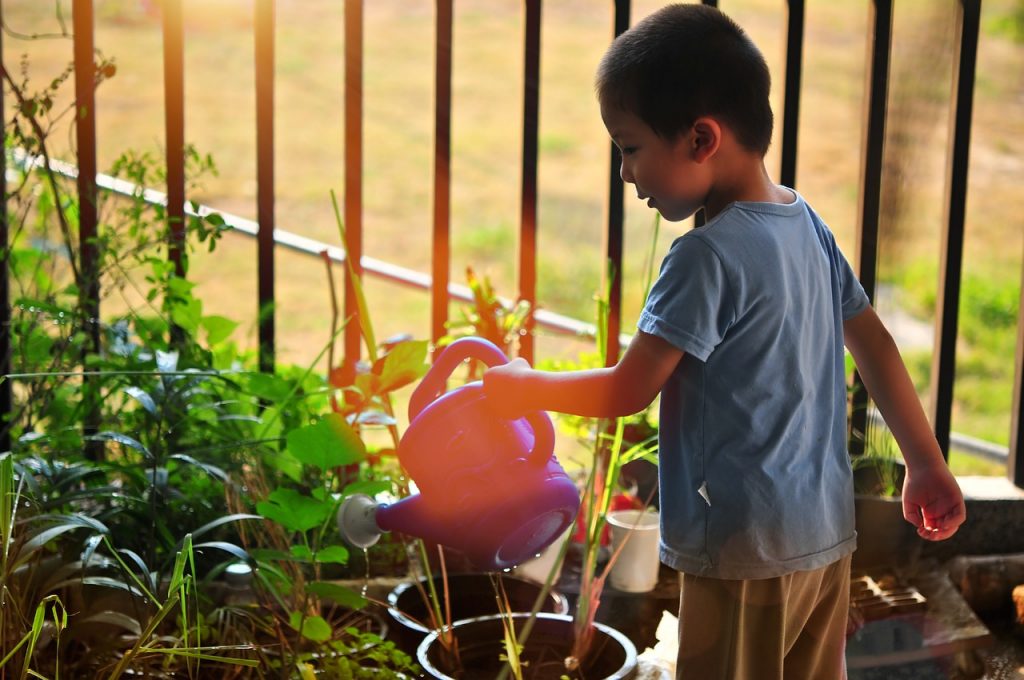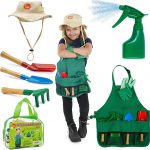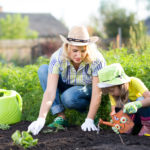When most people think of permaculture, they think of adults working in the garden. But what about using permaculture principles to teach kids? Gardening projects are a fun and sustainable way to teach children about permaculture, sustainability and self-sufficiency. Kids who learn about permaculture at a young age are more likely to become environmental stewards as adults.
They will also have the skill set necessary to grow their own food, which is becoming an increasingly important skill in our modern world. In this blog post, we will discuss some gardening projects that teach kids permaculture principles!
Permaculture Principle #01: Observe and Interact
The first permaculture principle is to observe and interact with your environment. When gardening with kids, it is important to let them explore their surroundings and ask questions. This will help them learn about the plants and animals in their garden, as well as how they interact with one another.
Keeping a Gardening Diary or Scrapbook is a great way for kids to learn about science, and they can make their own notes, add photographs or draw sketches about what they observe, or even stick in things like dried flowers.

Permaculture Principle #02: Catch and Store Energy
The second permaculture principle is to catch and store energy. In order for a garden to be sustainable, it must be able to store energy for future use. This can be done through the use of composting, mulching or setting up rain barrels or raintanks.
Kids can help by adding kitchen scraps to the compost, turning compost or adding compost to the garden, mulching plants, or helping to water the garden using rainwater tanks or barrels.
Handing out a garden fork to work the compost pile can be a great way to tire out energetic young boys who need a physical release in the form of active play, and is an example of turning their seemingly limitless energy into a great garden resource.


Permaculture Principle #03: Obtain a Yield
The third permaculture principle is to obtain a yield. This means that in order for a garden to be successful, it must provide something of value back to the gardener. In addition to teaching kids about sustainability and self-sufficiency, gardening also teaches them how to grow their own food. This can be an important life skill, especially if they live in an area where access to fresh fruits and vegetables is limited.
Getting kids in the veggie patch and letting them harvest their own fruits and vegetables is also a great way to improve their relationship with food and get them to eat more fresh fruits and veggies – I have absolutely no problems with my nieces and nephews getting enough as they munch through strawberries, tomatoes and beans in our gardens. Check out planting activities for kids for some more inspiration about what you can plant.
Permaculture Principle #04: Self reflection
The fourth permaculture principle is self-reflection. This is a great way to get kids thinking about their own actions and how they affect the environment around them. It’s important that children understand this concept so that they can make better decisions in life, such as recycling more often or consuming less plastic items like straws and water bottles
Kids can do this by keeping track of their waste production in a journal, or even making compostable materials at home using a kitchen caddy for scraps for later use in the garden! As scraps are added to the caddy, they can be added to the waste journal
Permaculture Principle #05: Use and Value Renewable Resources and Services
The fifth permaculture principle is to use and value renewable resources and services. In permaculture, renewable resources are those that can be replenished after they have been used up or depleted.
Using compost and mulch in the garden is an example of a renewable resource.
Kids can make their own garden fertilizer by collecting scraps from the kitchen and adding them to a worm farm, and harvesting the worm tea which can be diluted and used in the veggie patch. Worm tea can also be sold making it a cool little side hustle for your kids which may peak their interest even more! Worm tea is renewable and you can also harvest worm castings when it is time to turbo charge your garden beds.


Permaculture Principle #06: Recycle
The sixth permaculture principle is recycle and repurpose. This means that we should try to use materials as many times as possible before sending them to the landfill.
One way kids can help with this is by sorting their waste into different types of recyclable material, such as paper, plastic or glass. They can then take these materials to a recycling facility or even their school’s recycling program.
Kids can also help reduce waste by refusing straws when they order drinks, bringing their own reusable water bottle instead of buying disposable ones, or using less packaging when they buy products from the store.
Permaculture Principle #07: Holistic design
The seventh permaculture principle is holistic design. This means using a “design process” to create something from start to finish.
Kids can learn about permaculture and sustainable gardening by reading books or watching videos on YouTube with you, then taking that knowledge and applying it in their own garden!
They will get hands-on experience with all aspects of permaculture – this includes planning out what plants they want based on research done beforehand, planting seeds (or buying small seedlings), caring for those plants as they grow into larger ones over time. Ultimately harvesting whatever fruits/veggies come from those efforts too! It’s always nice when kids feel like their hard work paid off.
Taking the time to follow your kids through holistic design from conception, research, planning through to action and harvesting is a great example of enriching parenting, that not only nurtures plants, but your relationship with your children.
Permaculture Principle #08 Integration
The eighth permaculture principle is integration. This means that everything in a permaculture system should work together to create a more sustainable and self-sufficient ecosystem.
Kids can also get involved in integrated design by thinking about pairings and what could go with what. In the garden, this could mean planting flowers among the vegetables to help attract pollinators like bees, or using companion plants to repel pests for example planting Basil amongst Tomatoes
Conclusion – Permaculture for Kids
Permaculture projects are a great way to teach kids about sustainability, permaculture and self-sufficiency skills. These skills will not only help them make better decisions in life, such as recycling more often or consuming fewer plastic items like straws and water bottles, but will teach them valuable life lessons and skills they can use throughout their life. It is also a great way for dads to spend time with their children, nurturing the bond with their kids whilst getting fresh air, sunshine and a bit of soil underneath your finger tips!


Ken - I Fly Dad
Ken is a commercial pilot with dreams of leaving the hustle and bustle of the city to raise a large family on a homestead. He loves hanging out with his niece and nephews, gardening and enjoys writing about parenting, gardening, and aviation. For more tips on parenting check out his blog at www.iflydad.com
Related Posts
-
8 Best Kids Gardening Tools for your Little Gardener
In this article, we'll discuss the best kids gardening tools to help boost love for…
-
7 Best Kids Gardening Gloves - Parent Guide for Toddlers and Children
In this article, we have rounded the 7 Best kids gardening gloves for your budding…
-
Gardening Gifts for Kids - Our 2023 Guide for Parents
Thinking what to give your child as a birthday or Christmas present? Well think no…




Pingback: Container Gardening for Kids – What is it and How to Get Started | Fun Gardening for Kids